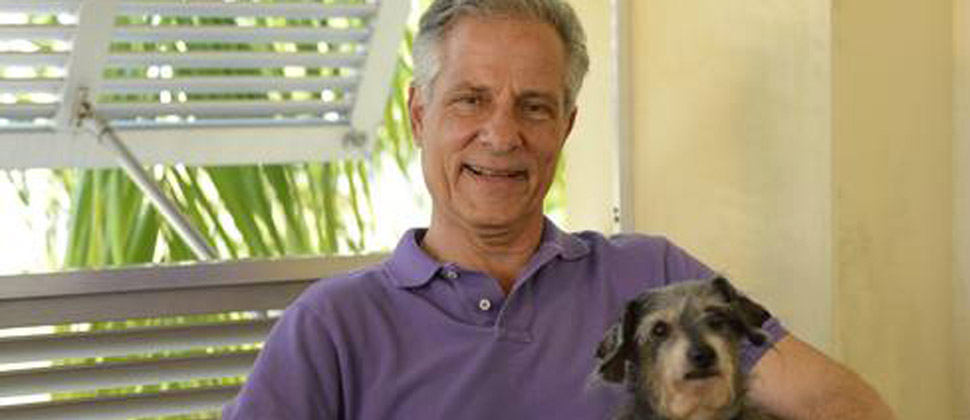
The Essential Elements of Schooner Bay
By Andres Duany
December, 2013
I had not been to Schooner Bay for a couple of years, so when I returned last week it was a shock—a very pleasant one. I had hoped that Schooner Bay would grow up to be a very simple place—in a sense, a very pure place—the way that I remember my summers on the Mediterranean island of Formentera. I will never forget how some of the most sophisticated, and indeed wealthiest, Europeans would find pleasure in a simple white room, an oak table, a round loaf of peasant bread, a wedge of cheese, a couple of big tomatoes, olive oil, and a knife. And, of course, good company and wine. I have tried to explain this kind of romantic island existence to as many people as would listen, but so many of the resorts ultimately became so elaborate that I sometimes ask myself, “Why do these people bother to leave Atlanta?”
I could stay personal and disclose that we designed Schooner Bay for the kind of people that authentic places attract. But, that would give too much credit to the architecture because clearly Orjan and Amanda (who grew up in the Bahamas) know very well what that almost paradise used to be like. They feel compelled to recover the experience for those who understand. And the experience is complex! Perhaps it can be conceptualized in what the ancient Greek philosophers (who were also fact scientists, as there was no distinction then) who lived in such places would have thought.
For most centuries, before the theory of the atom, scientists thought that life on earth consisted of four primary elements: Earth, Air, Fire and Water. Both the natural and human worlds were made of these elements. These four elements explain Schooner Bay better than anything else. Perhaps Schooner Bay makes atomic theory unnecessary! First, Earth: On the land of Schooner Bay, much of the food is grown. That uphill farm is a jewel. What solid virtue emanates from growing your own food! And then the houses, which are solid as rocks (they are poured concrete). There is no squishy insulation or gypsum wallboard to be ruined in case of a wave. This was the original way to deal with storms. Elevate the houses as much as you gracefully can (Schooner Beach has been elevated well above sea level by the fill from the harbour so the houses fit like part of the earth) and then make houses that can get wet without damage. And where the Earth meets the Water there is that beach. Its great curve is the primeval image of natural forces. But, there is also the man-made water: the harbour, tear-shaped, where the boats leave to fish offshore. I like to think that the fish provide the protein to complement the produce of the uphill farm.
Beyond beach and harbor there is other water: beautiful pools will be built. Even if you have a momentary nostalgia for a Miami Beach resort, that can be assuaged with the beauty of a well-designed pool. Swimming pools are one of the things humanity does well. After Water, which is everywhere, there is Air. The sea breezes come through the windows (if I build a house it won’t have glazing). The breeze, which at night might be too much, is blocked naturally by the houses the lee of the wind. Then there are the sailboats, which is the air made visible. And staying on transportation (let’s not get too low-tech about everything), I am grateful that there are many airlines arriving at Marsh Harbour. Thank you air, for holding up my airplane.
Then Fire: the cooking is already first rate. It is simple, but there is nothing primitive about it. The bonds of community take place around the campfires built by the harbor. I had a wonderful evening with a dozen strangers staring into the fire as so easily I made friends. Fire at the heart of the community—the oldest thing in history. But, I must also bring up the high-tech fire: solar panels, and the advanced geothermal plant that taps into the temperature of the aquifer—technology, yes, but simple and durable.
So, that is how I want to think about Schooner Bay—mostly in terms of the “old science” of life: Earth, Air, Fire, and Water.
Andres Duany is Co-Founder and Principal of Miami-based architecture and planning firm, Duany Plater-Zyberk & Company (DPZ). He was raised in Cuba and New York City and earned architecture and urban planning degrees from Yale and Princeton. A respected thought leader in his field, Duany is a driving force behind the New Urbanist movement in America and around the world. He is the Co-Founder of the Congress for the New Urbanism and has co-authored two books on urban development. Duany has received numerous design awards and two honorary doctorates and his firm has completed designs for over 300 new and existing developments. DPZ collaborated on the master plan for Schooner Bay and has been involved with the community since its inception.

